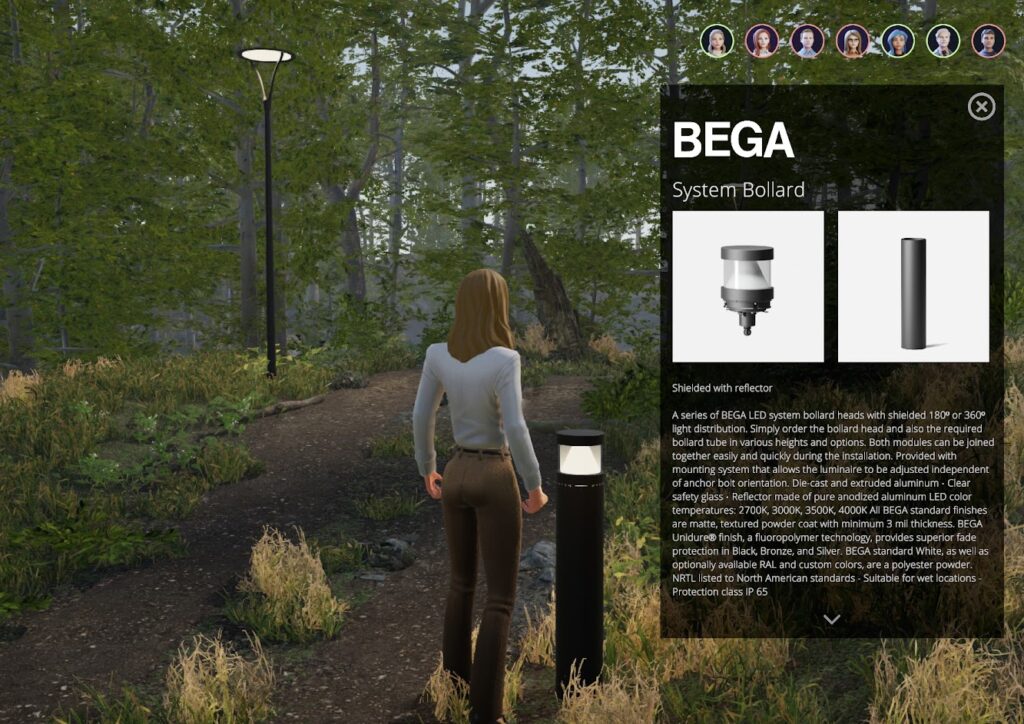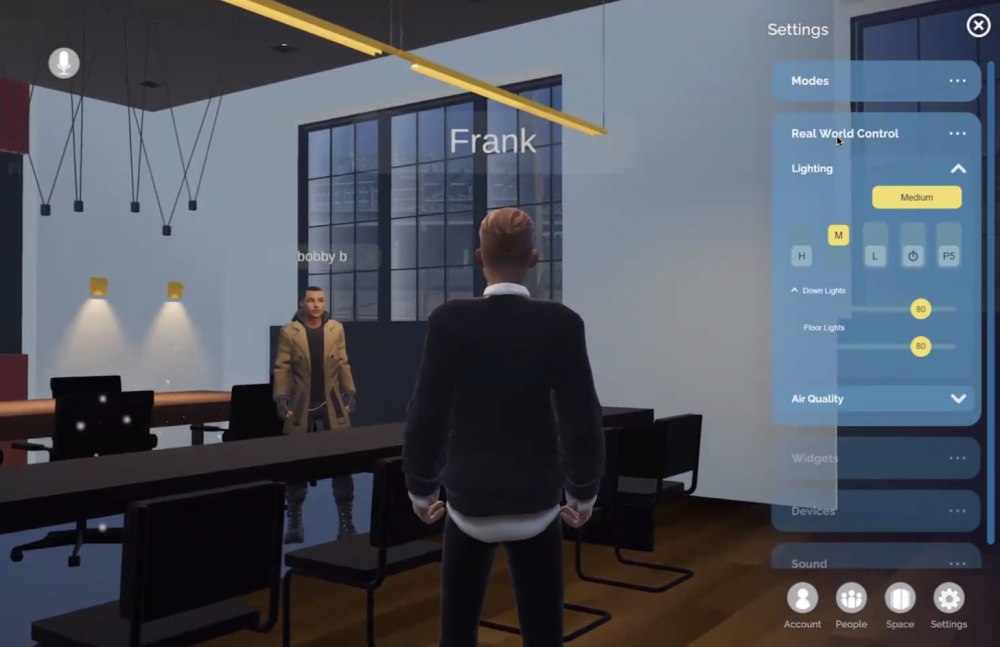- Many companies are seeking a balance between giving their employees greater flexibility with work-from-home policies and hosting much-needed collaboration in-person
- The metaverse and digital twin environments are richly capable and versatile solutions to this.
- With so many ways to design, curate, update, and innovate, the metaverse is a place where organizations can find and ultimately create growth.
This article was originally written by Environments‘ Erin McDannald for Work Design Magazine.
There has been a lot of metaverse buzz over the past few years, but the public’s understanding of the technology is overwhelmingly different from how it will ultimately transform the future of the workplace.
With many companies seeking a balance between giving their employees greater flexibility with work-from-home policies and hosting much-needed collaboration in-person, the metaverse and digital twin environments are richly capable and versatile solutions.
Integrating the metaverse into a company’s infrastructure introduces a whole new way for employees to stay connected to both the office environment and their peers, enjoying a sense of workplace engagement with any working model.
Workers may choose to work from the office, from home, hybrid, or in the metaverse, working remotely but still maintaining the physical and interpersonal sense of an office. Not only do the metaverse and digital twin create a more collaborative environment, but they boost business ROI as well.
The Metaverse Is Here To Stay, But Not In The Way You May Think
Many people associate the metaverse with AR and VR technology, but headsets and glasses aren’t essential to a complete experience, especially in workplaces. Developing beyond the need for cumbersome hardware, a more thoughtful and empathetic approach to the metaverse is here and has a lot of sticking power.
The metaverse workplace will continue to evolve over the next handful of years. It allows for immense brand expression and expansion through curated interactions and experiences that leave lasting impressions.
For example, the design industry can use the metaverse as an alternative to the typical showroom, circumventing the ongoing supply chain delays and rising costs of samples. Rather than flying customers into your physical environment to display samples, invite your audience into a virtual showroom where they can still explore, discuss, interact, and experience.

Eventually, the metaverse office will be seen as an extension of the physical office, operating as a thoroughly connected environment. It offers incredible potential to go above and beyond the capabilities of current physical spaces. With so many ways to design, curate, update, and innovate, the metaverse is a place where organizations can find and ultimately create growth.
Optimizing Business Functions
Metaverse environments fortify brand identity and equity through customized experiences and interactions with staff, customers, and visitors. It will add new value to businesses and their property, from trainings that help customers explore a product to tours that foster a connection to a physical location.
Inside their metaverse spaces, companies will ultimately be able to tailor their settings to delight users with immersive events and personalization features. Think of it as a motherboard for business functions and the bridge between the physical and digital offices.
Business leaders will be able to integrate Internet of things (IoT) enabled technology like heat mapping, air quality monitoring, and smart lights to be fully controllable within the metaverse office, further uniting the digital and physical worlds.

Integrating the Metaverse
Even when a metaverse environment is designed for ease and intuitive use, it may require some time and training to ensure leaders have total employee investment. Because the metaverse is relatively new to many, most businesses choose to have their virtual office completely mirror their physical office to create familiarity and increase buy-in.
After employers create a metaverse where their staff feels comfortable, the next step is establishing a community, which helps team members feel happier and more connected to their jobs. Metaverse environments are strong outlets for workplace community, offering incredible flexibility and a whole new place to connect with peers.
The digital spaces create more inclusive workspaces and allow for “water cooler” talk or other serendipitous moments that can’t happen over traditional meeting platforms.

What We’ve Learned
It’s important to me as a metaverse development leader that my company is confident in our offerings. At Environments, we consistently implement and interact with technology before promoting it to our customers. This is a really exciting way for our teams to test new technologies and abilities, then pass them on to our clients.
As such, we must troubleshoot and identify ways to continually improve our interaction with the metaverse. Since onboarding my entire staff to the metaverse, we’ve learned so much about how it’s optimized our company culture and our business ROI.
Employees are excited to work and connect within our digital twin; we’re seeing developments come from the interactions between mixed teams, and we’ve gone above and beyond our pre-pandemic collaboration figures. Based on my experience, I estimate a financial return on metaverse integration investment in less than one year.
As business leaders weigh the future of their workspaces, they must look beyond just the physical space. The solution for more robust collaboration and mentorship isn’t a whole week in the office but a work week in collaborative spaces. Expanding business into the metaverse is one of the most innovative ways to adapt within the hybrid work era without sacrificing employee happiness.


 Dr. Gleb Tsipursky – The Office Whisperer
Dr. Gleb Tsipursky – The Office Whisperer Nirit Cohen – WorkFutures
Nirit Cohen – WorkFutures Angela Howard – Culture Expert
Angela Howard – Culture Expert Drew Jones – Design & Innovation
Drew Jones – Design & Innovation Jonathan Price – CRE & Flex Expert
Jonathan Price – CRE & Flex Expert














